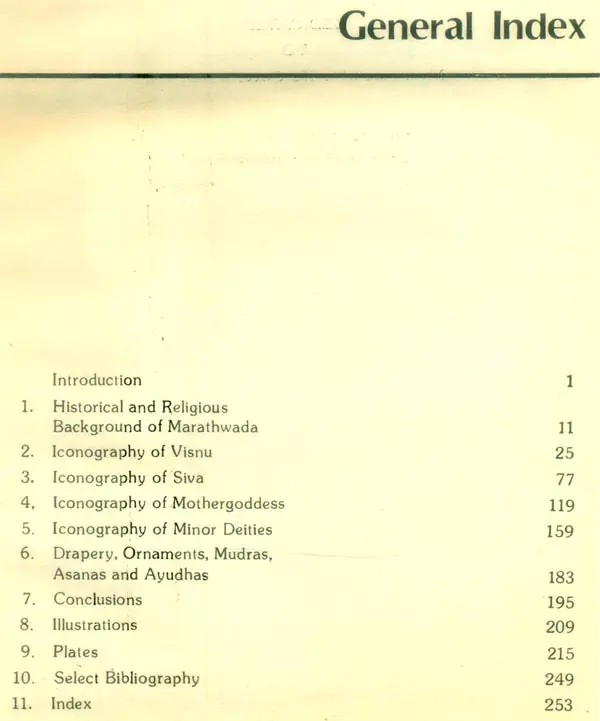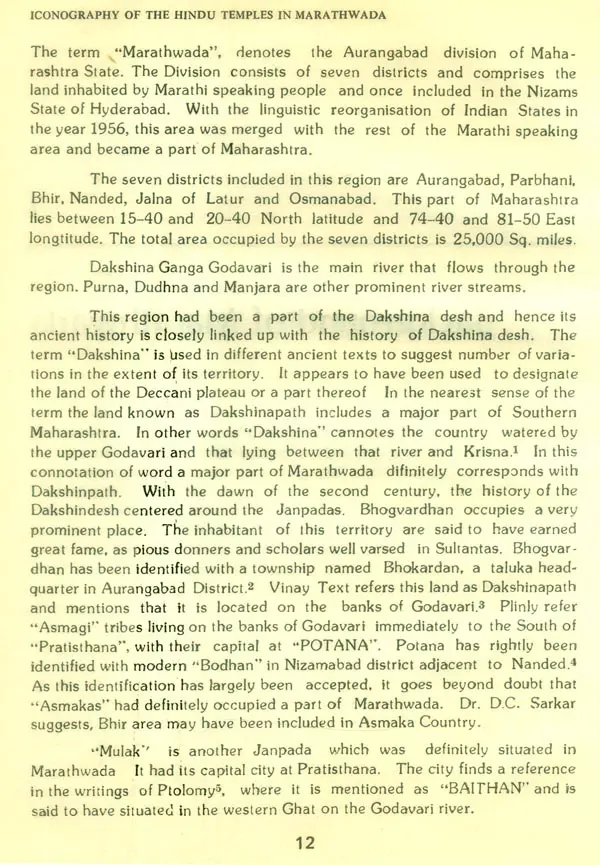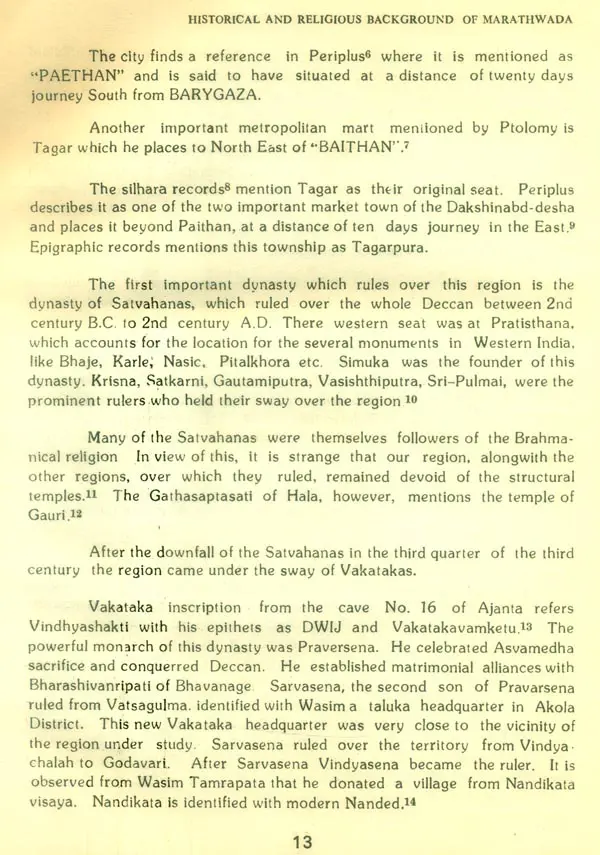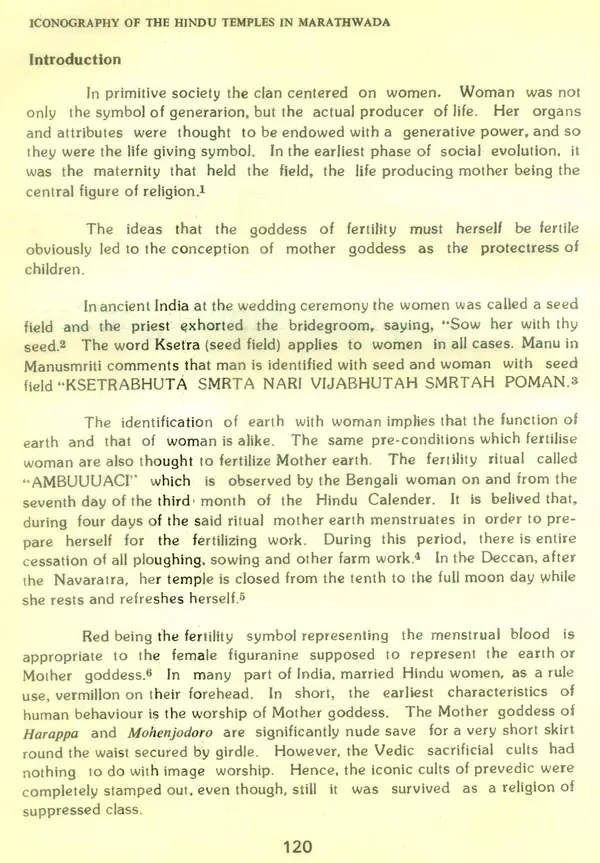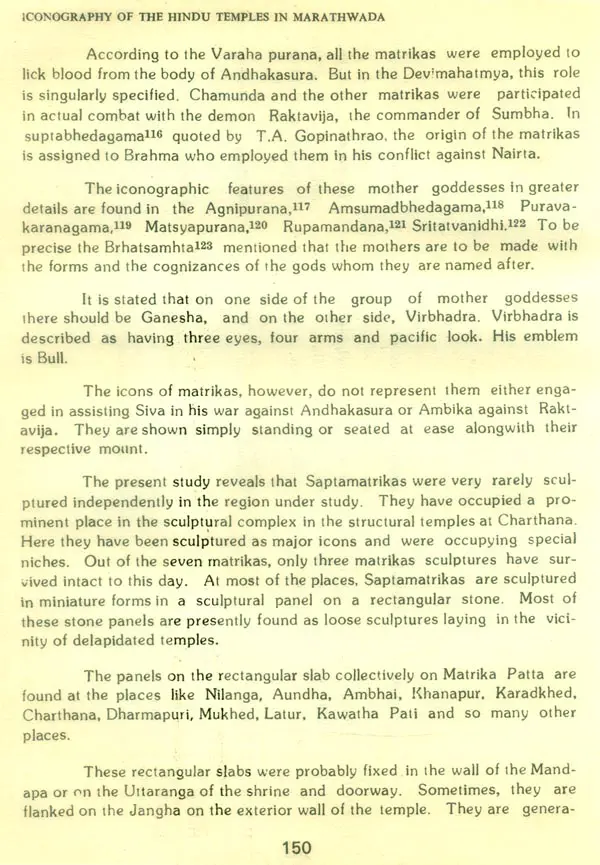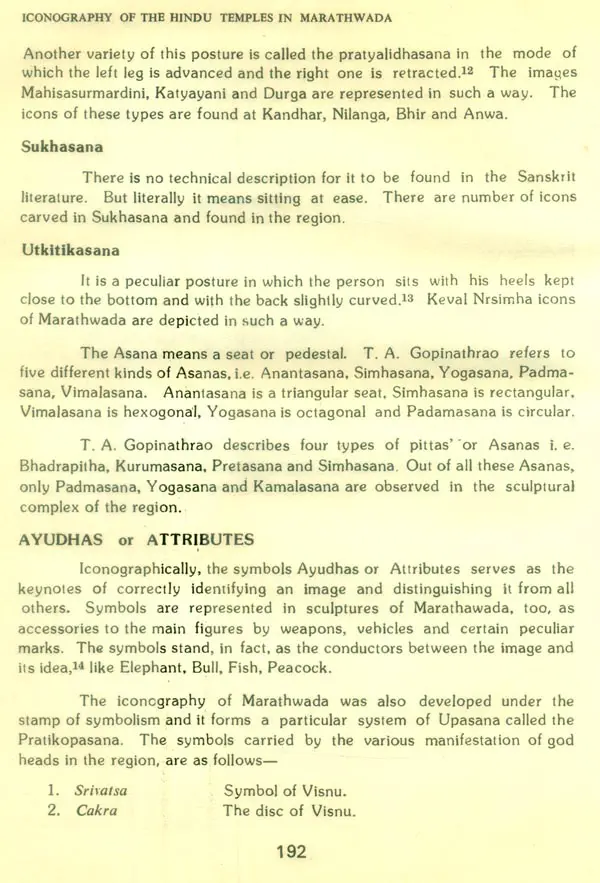
Iconography of Hindu Temples- The Hindu Temples in Marathawada (An Old and Rare Book)
Book Specification
| Item Code: | UAD283 |
| Author: | B.S. Deshmukh |
| Publisher: | Publication Scheme, Jaipur |
| Language: | English |
| Edition: | 1987 |
| Pages: | 262 |
| Cover: | HARDCOVER |
| Other Details | 10.00 X 7.50 inch |
| Weight | 740 gm |
Book Description
The art of building took a notable step forward under the royal patronage of the Mauryas, Sungas and the Satvahanas. About the same time Buddhist rock-cut architecture began to evolve and was maintained throughout whole of the first millennium, only falling into disuse in the early medieval times.
The Deccani track was influenced by two architectural movements of greater powers. One, evolved under the patronage of Solanki dynasty of Gujarat and the other one spread towards the South and influenced by latter Calukyan architecture. 'Marathwada which forms a part of the Deccani track reveals number of architectural monuments built during the medieval period.
These medieval structural temples are spread over the seven districts of Marathwada However; most of the temples are located in the districts of Bhir, Osmanabad and Latur. Handed, Parbhani and Aurangabad districts also reveal some interesting centers of temple complexes. Mainly all these temples have been constructed either in Godavari river valley or in the vicinity of ancient trade route of' India. Anwar. Jacked. Tar, Nilanga, Mankeswar, Omerga and Ambhai are some of the important temple sites in the vicinity of the ancient trade route of India. Whereas, Rahegan. Pangaon, Dharmapuri, Rambling Mudgal and Shelgaon are temple sites found in the vicinity of Godavari valley.
Although these medieval structural temples are commonly known as "Hemadpantj"' temples, they do not belong to one common style. but carry forward many earlier temple styles.! Most of the temples in the region belong to the early and latter medieval periods. The latter Calukyas, the Kaktiyas, Hoysalas and the Yadavas have left their imprints on the temple complexes of this area.
The medieval structural temples of this region display an artistic blending of the tradition of the "Sthapatj"' and "Shelli". The Sthapati of an Indian tradition was a priest architect who had a training in numerous arts and sciences He was fully conversant with the Shashtras. "Shilpj" was also equally well versed in the various Shashtras. Most of the temples here reveal an inclination to profusion of art. The sculptural ornamentation lends a charm to these temples and presents a beautiful panorama of the Hindu deities. The exit ion walls of the medieval structural temples have been profusely sculptured with the icons of the various Hindu deities.
The iconography of the sculptures carved out on these structural temples of the region present a very interesting theme of study.
The study of the structural temples of the region revealed that hundreds of these temples were constructed during the medieval period. And almost all of these temples were sculpturally embellished by excellent sculptural ornamentation on the exterior walls. The temple building activities continued in the region totally undisturbed till the 13th century.
The changing political condition in the late 13th century and the Muslim invasions greatly disturbed the artistic activities of the region. Temple could no more be a centre of sculptural embellishment. Large number of the temples on the other hand, already constructed suffered destructions at the hands of iconoclasts, and the sculptures on exterior walls were being badly mutilated.
However, a number of icons were saved from these iconoclastic vandalism and have still been preserved in the form of stray sculpture scattered and mostly left un cared for in various parts of the region. Many of these solitary icons have been now collected and preserved in Marathwada University Historical Museum. However, hundreds of such solitary sculptural remains are still lying unattended too in the remote temple centers of the area. All these stray icons were once occupying the prominent places on the exterior walls of the structural temples. Some of these icons reveal extraordinary features and the rare forms of the prominent deities.
The temples at Dharmapuri, Pangaon. Nilanga, Omerga, Anwar, Hotel and Aundha are the best existing specimens of the temple building activities of medieval period and are the prominent temple complexes.
Present study of the iconography of the structural temples, mainly concerns with the icons, carved out on the exterior walls of the structural temples at these prominent centers and also encompasses the iconography study of the loose sculptures scattered here and there over the region.
Book's Contents and Sample Pages
